Do you have a condensation problem on your ductwork between floors and are not quite sure what to do? Don’t fret! You’ve come to the right place! We’ve done in-depth research about this issue to determine the perfect solution, and here's what we've learned.
If the condensation on ductwork between floors is becoming troublesome, the first things you can do include:
- Duct Insulation: this will significantly reduce sweating and leakage.
- Ductwork Sealing: this blocks the entry and exit of air -one of the major causes of condensation.
- Vapor Barrier Installation: a six millimeter thick vapor barrier on the entire floor keeps moisture out of the floor.
Moving ahead, we’ll talk about why condensation occurs in the first place and the step-by-step instructions to accomplish these solutions.

What Causes Duct Condensation?
When hot, humid air enters the house due to poor insulation, it causes duct condensation. It also takes place when the air conditioner gets really cold, but there’s low airflow to push the cold air out. In some cases, it could also indicate damaged ductwork, particularly if the equipment is more than a decade old.
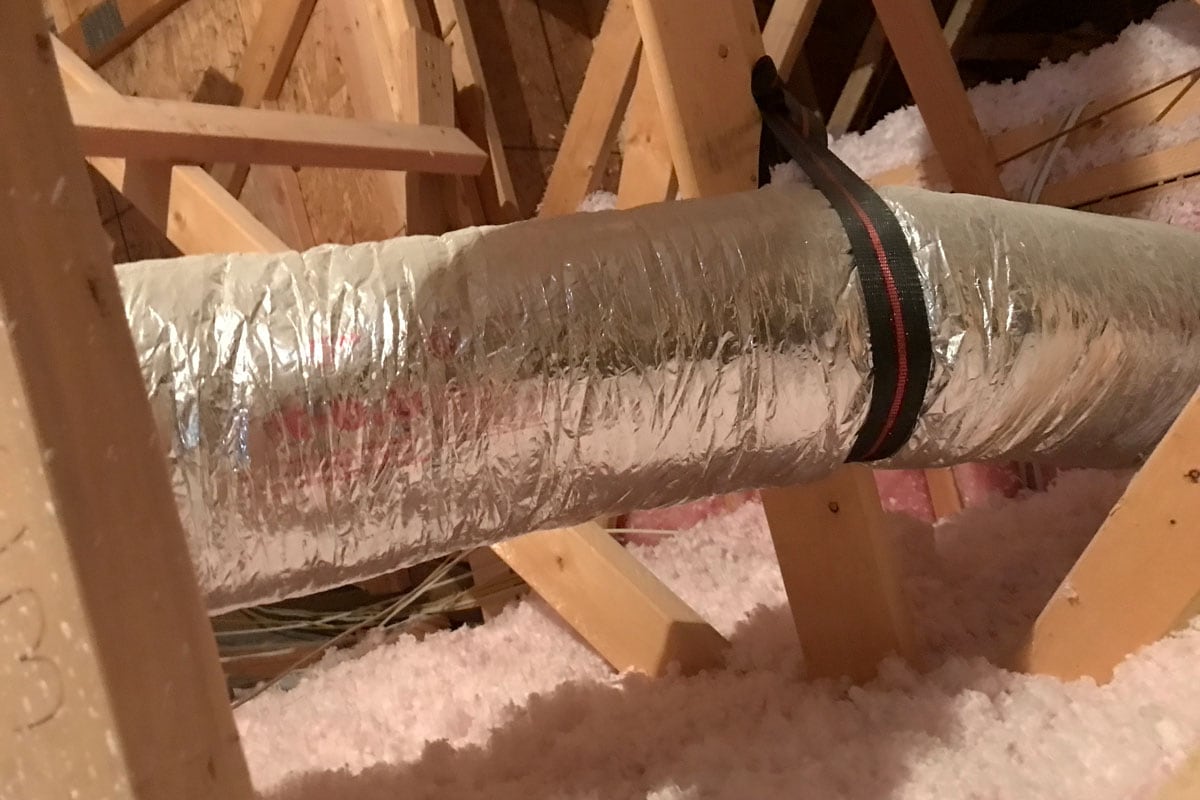
Should You Worry About Duct Condensation?
Occasional duct sweating isn’t a problem, but persistent sweating is, so keep an eye on it. If not addressed early, the following problems might arise:
- Water damage
- Decreased R-value
- Structural defect
- Mold and mildew proliferation
- Bad indoor air quality
How To Stop Duct Condensation Between Floors
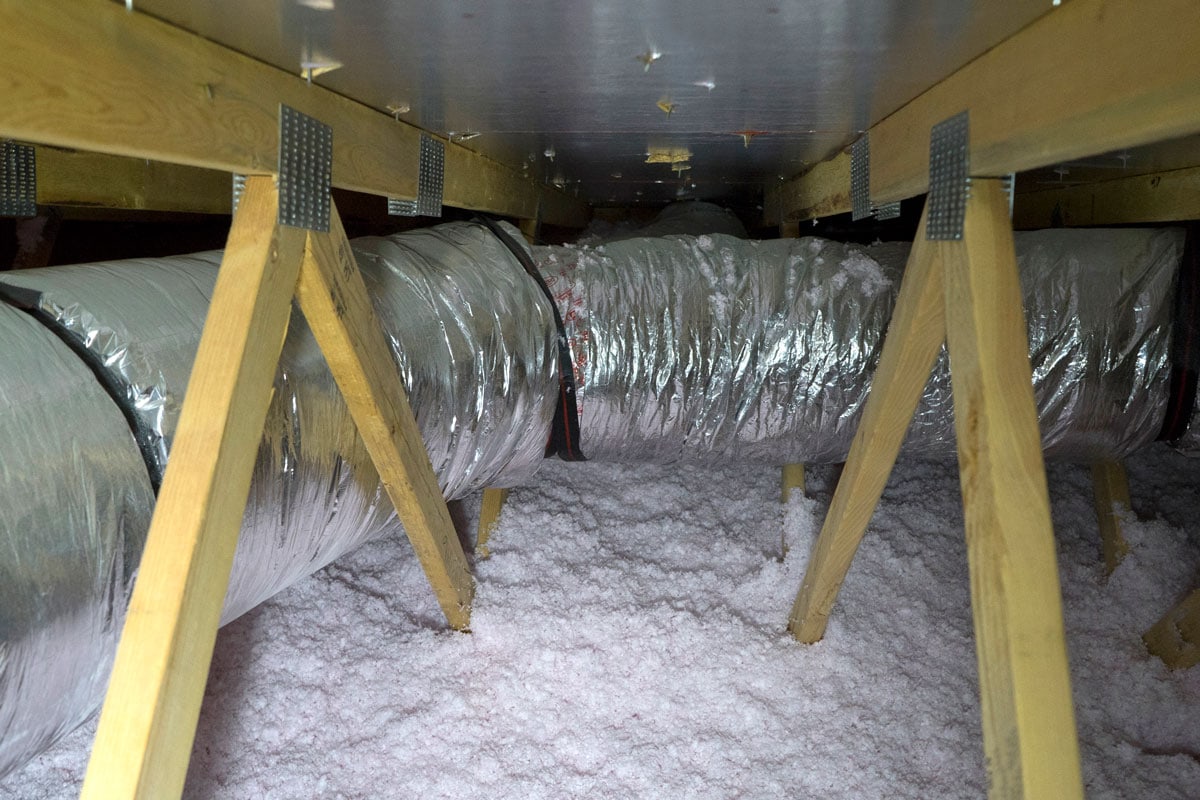
Duct Insulation
Insulating materials with R-6 such as fiberglass is preferable because they are cost-effective. See the steps below for duct insulation:
- Make sure that the duct is dust-free and air leaks are patched.
- Cut the fiberglass insulation with a utility knife.
- Hold the battens in place with adhesive or foil tapes.
- Put the fiberglass strips on the duct elbows. Pinch the strips to avoid gaps in between.
- Mark the connecting portions to access the duct for future repairs.
- Check for any loose batts.
Check out this product on Amazon.
Ductwork Sealing
This is to patch the point of entry and exit of the air. It’s relatively simple to complete.
- Apply mastic sealant to seal air leaks. Most ductwork is concealed or hard to reach, but try to patch the parts that you have access to. If mastic sealant is unavailable, try metal tape. Avoid duct tapes because it wears out fast.
- Seal the ductwork connections, too where condensation most likely occurs.
Check out this item on Amazon.
Vapor Barrier Installation
A vapor barrier is a plastic sheet used for damp-proofing walls or floors. Here’s how to install it:
- Calculate the square footage of the area to determine the amount of liner you’ll need.
- Get rid of the dirt and debris before unrolling the plastic sheet.
- Once the vapor barrier is laid, secure with rocks.
As mentioned before, a six millimeter thick material is recommended. Note that this isn’t a one-time project; a vapor barrier must be replaced every three to five years.
Other Things You Can Do To Avoid Excessive Condensation
- Maintain a low humidity level around your ducts. By keeping the ducts spaced apart, you can avoid moisture issues.
- Unblock ductwork. This sustains good airflow, reducing condensation.
- Change filters periodically. Clogged filters result in poor air circulation. As a general rule, replace filters every three months.
- Repair air leaks immediately. You can detect air leaks using a pressure gauge or place your hand on the duct.
How To Know If Your Ductwork Needs Repair Or Replacement
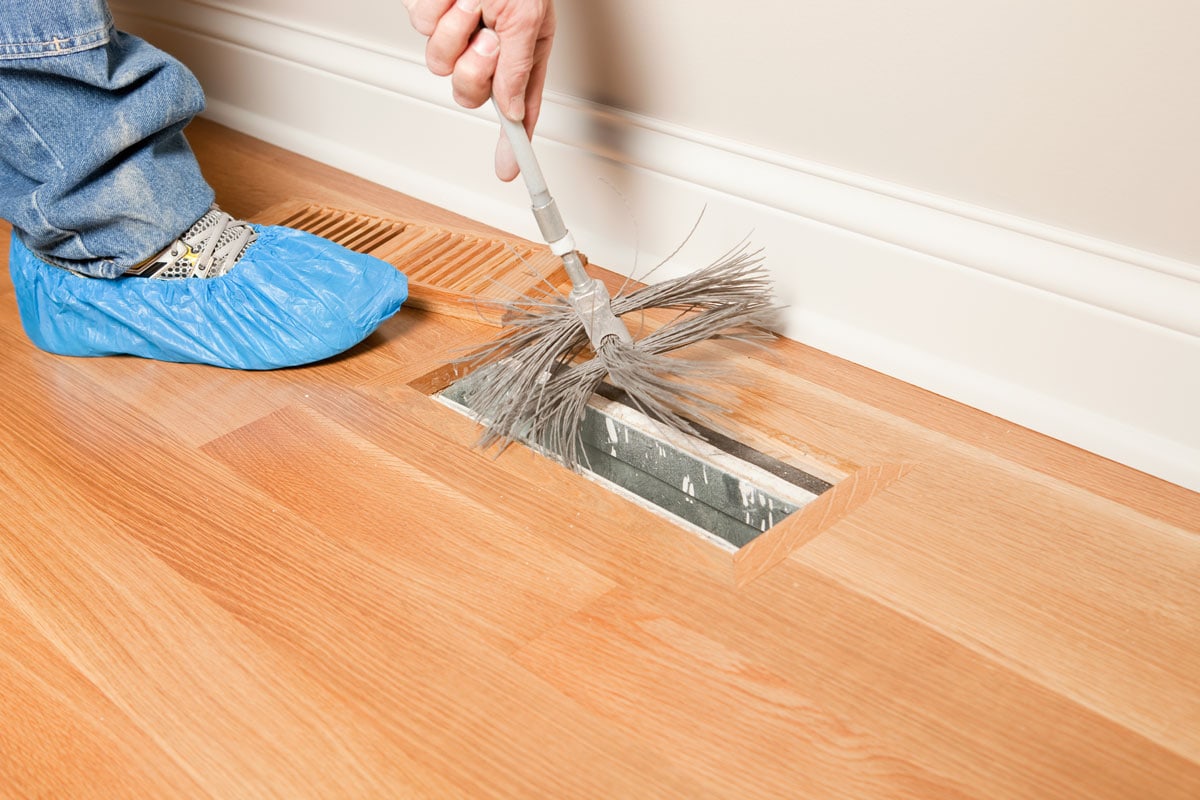
If the suggested solutions don’t work, it might be a sign that you need to have your ductwork repaired or replaced. Here are some other signs of bad ductwork:
- Uneven Temperature: Air leaks in ductwork often lead to inconsistent house temperature due to insufficient amount of air. But this could also be caused by clogged or damaged air filters.
- Dusty Vents: Vents trap dust and dirt, but you’d know it’s a ductwork problem if the dirt accumulates faster. This might cause your HVAC system to break down.
- Strange Sound: Do you hear banging or grinding noise on the ductwork? It’s either due to excess pressure or a loose part inside. This often leads to replacement.
- Weak Airflow: Ductwork distributes air, so poor air circulation most likely has to do with them. If neglected, the HVAC system will overheat.
- Musty Smell: Mold and mildew thrive in damp areas, so a moldy odor indicates moisture issues.
- Pest Infestation: Crevices on the duct serve as an entry point for rodents, spiders, and other uninvited guests. Take dead or dropping pests from ductwork as a sign to talk to the HVAC pros.
- High Utility Bill: Damaged ductwork causes your HVAC to work harder to achieve consistent temperature, doubling your energy consumption.
How Much Does New Ductwork Cost?
The cost of new ductwork mainly depends on the house’s size; the larger your home, the higher the cost. But on average, the price ranges from $454 to $2,046. Choosing a different system than your existing one will require vent replacement as well.
Can You Replace The Ductwork Yourself?
Yes, you can. But before you do it yourself, remember that ductwork runs through your property, which means the replacement might be harder than expected. Unless you are confident you can do it properly, leave it to the experts. Energy star says that 20 to 30% of air loss at home is due to incorrect duct installation.
How To Maintain Your Ductwork
With proper maintenance, you can extend the lifespan of your ductwork. Here’s how:
Keep It Clean And Dust-Free

Dirt, debris, and pet dander are unavoidable, but vacuuming and mopping the ductwork periodically can make it less dusty. The rotating brush duct cleaning system and vacuum cleaner make a complete package.
Change Filters
Filters catch air pollutants. They accumulate over time, so filters need replacement every three months. But some need to be changed monthly- this depends on the brand. Check out the expected use on the packaging.
Maintain Quality Indoor Air
The best way to achieve this is by investing in an air purifier. It traps dirt and air-borne contaminants, keeping the indoor air clean; you can spend less time cleaning ductwork. This can also make air filtering easier for your HVAC system. Not all air purifiers are created equal; choose the one that best suits your needs before getting one.
Keep Vents Open
Vents take part in expelling dirt and dust; keeping them open prevents buildups on ducts. Also, ensure that there’s no obstruction anywhere near the vent that can weaken airflow.
Never Delay Repairs
Most costly repairs or replacements would have been avoided if only the problem was addressed immediately. Before a simple defect gets worse, contact a reliable HVAC repair service.
How Long Does Ductwork Last?
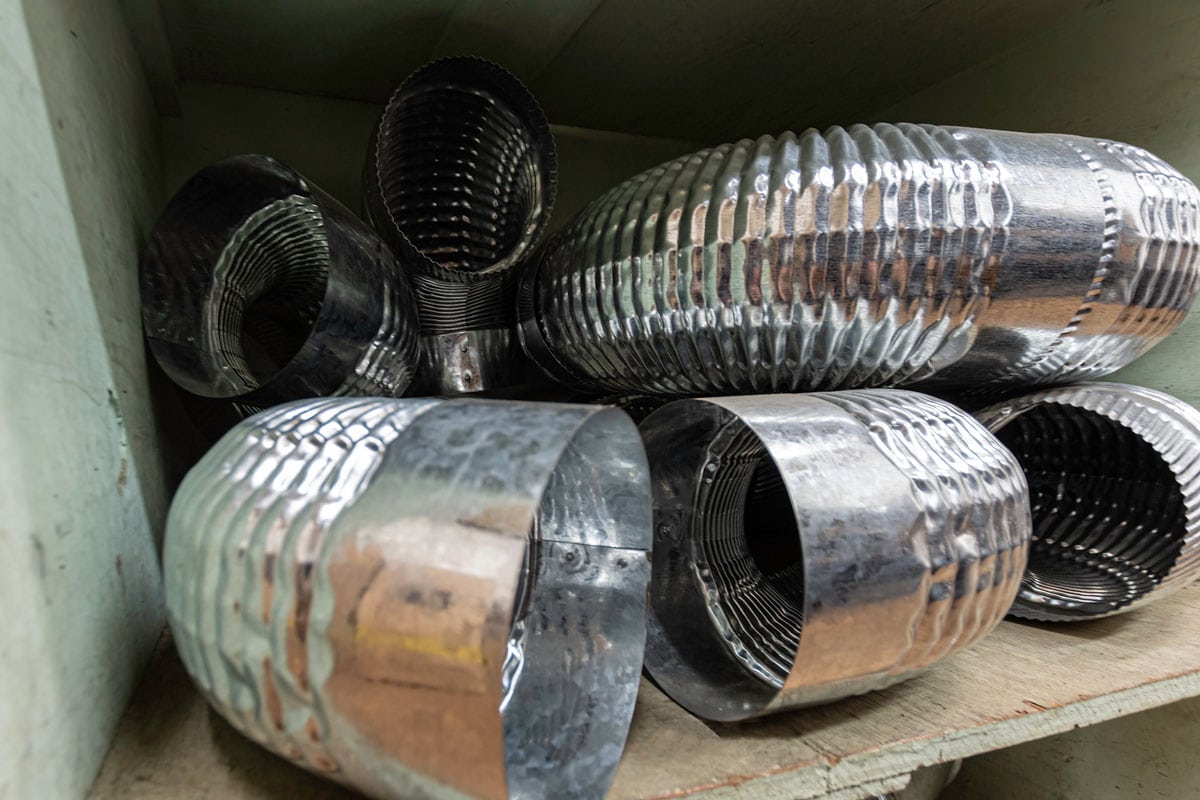
The life expectancy of ductwork is 10 to 15 years. Once it’s a decade old, problems such as air leaks, weak airflow, mold and mildews, and pest infestation, start to arise.
Is There Some Type Of Coating You Can Use To Prevent Duct Condensation?
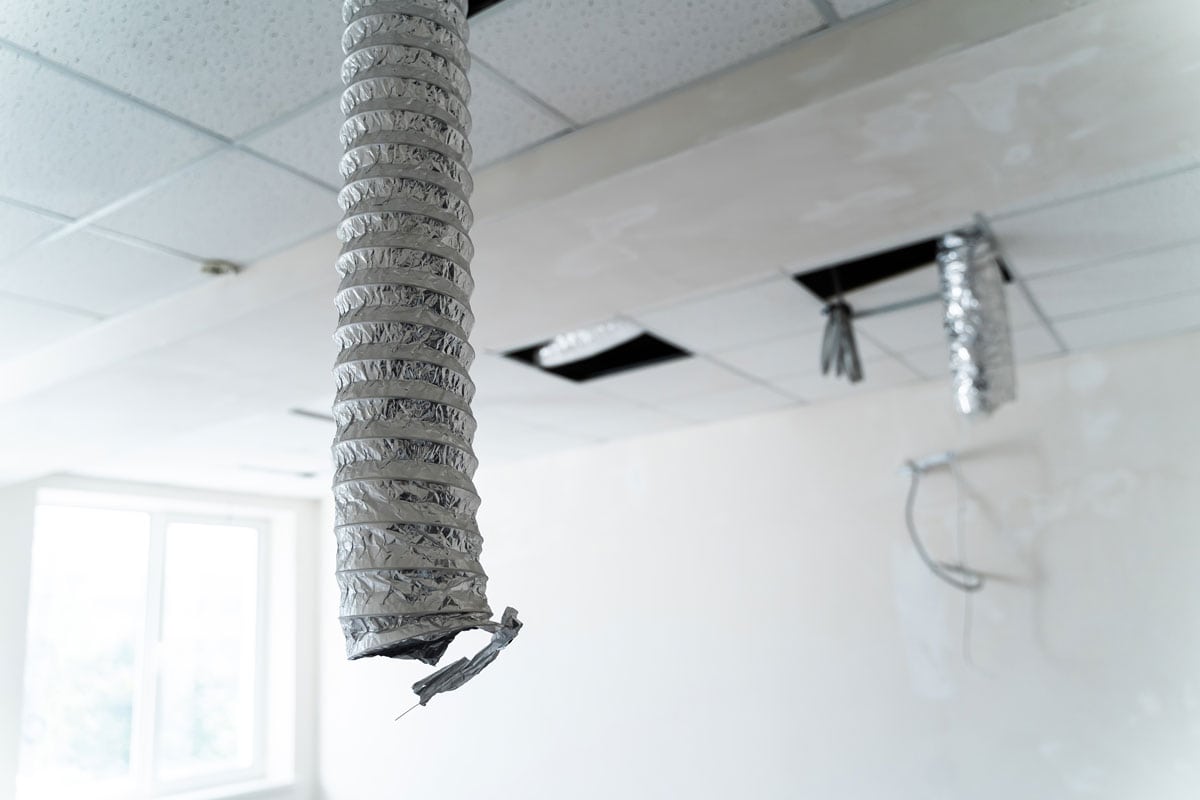
There’s mold-resistant duct coating. It might not be able to repel moisture, as it is designed specifically to protect fiberglass inside the ductwork from mold and mildew. But it can decrease humidity level.
This is applied after ductwork deep cleaning and decontamination. Use a roller brush to coat the duct interior.
What If The Fiberglass Insulation Gets Wet?
Fiberglass is made of tiny glass strands, they aren’t water absorbent but they lose their thermal resistance when wet. As soon as they dry out, they regain their insulating properties.
Wondering how long fiberglass lasts? It’s 80 to 100 years! So there’s nothing to worry about frequent replacement.
Conclusion
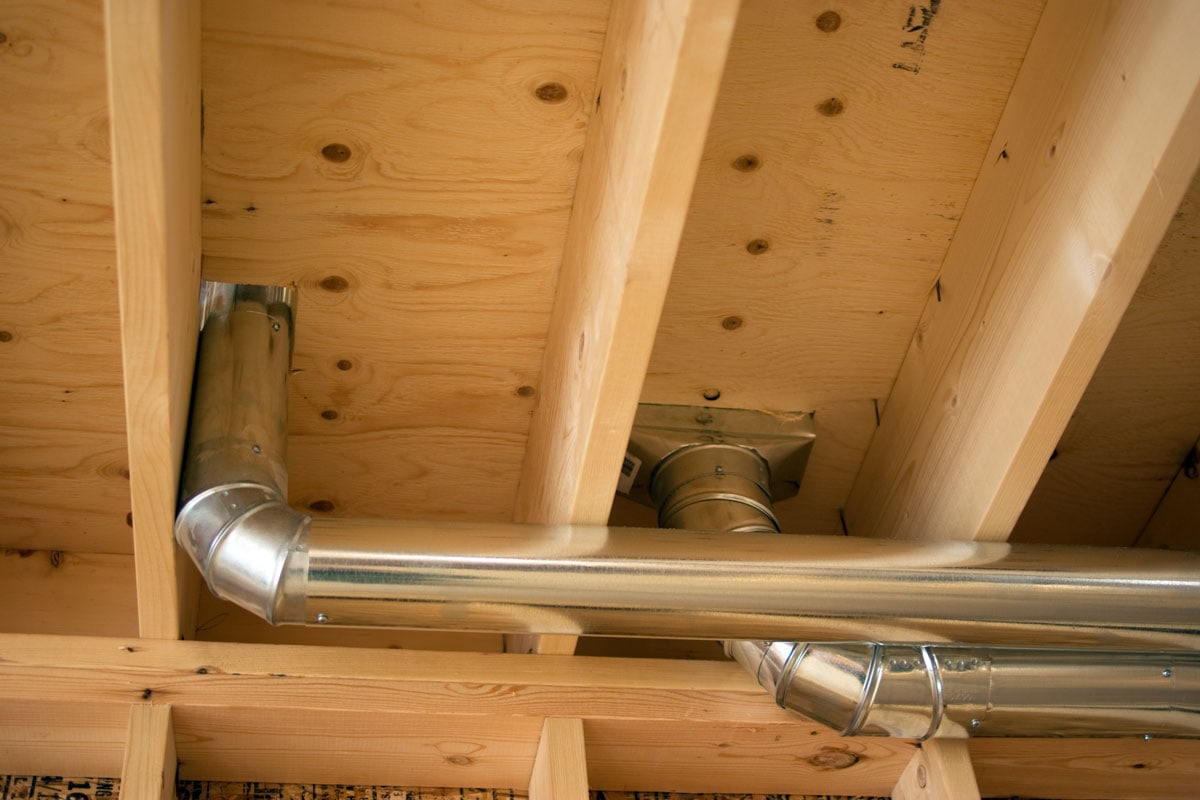
Condensation on ductwork between floors occurs when humid air enters your home or there’s low airflow to push the cold air out. Occasionally, it’s okay, but if it’s becoming a common occurrence, some things you can do to fix it include installing a vapor barrier, sealing the ductwork, and insulating the duct.
If you liked this post, you might also like:




